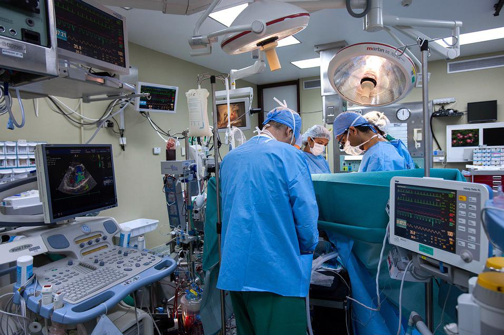At what point does chronic vein disease require surgery? Vein disease can be one of the more painful complications for any patient. It occurs when the veins in your legs do not allow the blood to flow to your heart. In normal circumstances, the valves inside your veins make sure that the blood flows back to the heart.
However, when these veins get damaged, the blood flows backward (with gravity), which causes it to pool in your legs. This disease is also known as chronic venous insufficiency.
This complication requires urgent treatment and recovery since it may lead to dire circumstances. The increased pressure in the legs can pile up and permanently damage the valves in the veins.

(Source)
Symptoms of Chronic Vein Disease
At the beginning of the disease, you may begin to experience mild symptoms. But slowly and gradually, these symptoms can start to become more serious and complicated. Some of the symptoms include:
- Swelling in the lower legs for an extended period of time
- Legs feeling heavy and tired
- Itching on legs and feet
- Discolored legs due to pooling of blood.
If these complications are not dealt with on time, they may require surgical assistance to overcome the issue.
Chronic Vein Disease Surgical and Other Treatment Methods
Since the issue can escalate quickly, it is important for the patient to seek professional help immediately. The early treatment methods may focus on helping the blood move back to the heart. One of the positive things is that over 90% of the patients suffering from this disease do not require surgery or incisions.
1. Compression Stockings
Most healthcare professionals often go with compression stocking to help the patient alleviate the problem without having to go with surgical options. These are essentials for the treatment plan without surgery. These stockings put pressure on your veins and squeeze them in order to push the blood back towards the heart.
The regular usage of these stockings may help in reducing the symptoms of the disease. Doctors usually advise the patient to wear them throughout the day and only remove them at night.
2. Ligation and Stripping
This option is a surgical method where the surgeon cuts the affected veins and ties them off. Usually, during ligation and stripping, the surgeon makes two small incisions to get rid of the problem.
3. Angioplasty and Stents
This surgical method is used to open a blocked pathway in a vein. The angioplasty opens up the blocked pathway on the vein with the help of a tiny balloon. Meanwhile, the stent is one of the mesh tubes that prevent the pathway from ever narrowing again. They are implemented with a small puncture near the affected area and then inside the vein.

(Source)
How to Minimize the Risk Factors?
There are numerous ways anyone can minimize the risk factors related to chronic vein disease. These precautions include:
- Avoid long periods of standing up or sitting
- Elevate your legs and workout
- Quit smoking and exercise regularly
- Protect your skin against open wounds and infections
- Lose weight and adopt a healthier lifestyle.
Adopting these changes will help you overcome the complications and keep you safe from risk factors.
When Does Chronic Vein Disease Require Surgery? Final Thoughts
If you are facing any symptoms related to chronic vein diseases, you should not waste time. Reach out to Norman Chideckel, MD, an expert vascular surgeon working at the Vascular Surgery & Vein Center in New York City.
Schedule an appointment by calling 212-993-6133, or visit us at:
Vascular Surgery & Vein Center
Norman Chideckel MD
108 East 96th Street
Front 1
New York, NY 10128
212-993-6133


